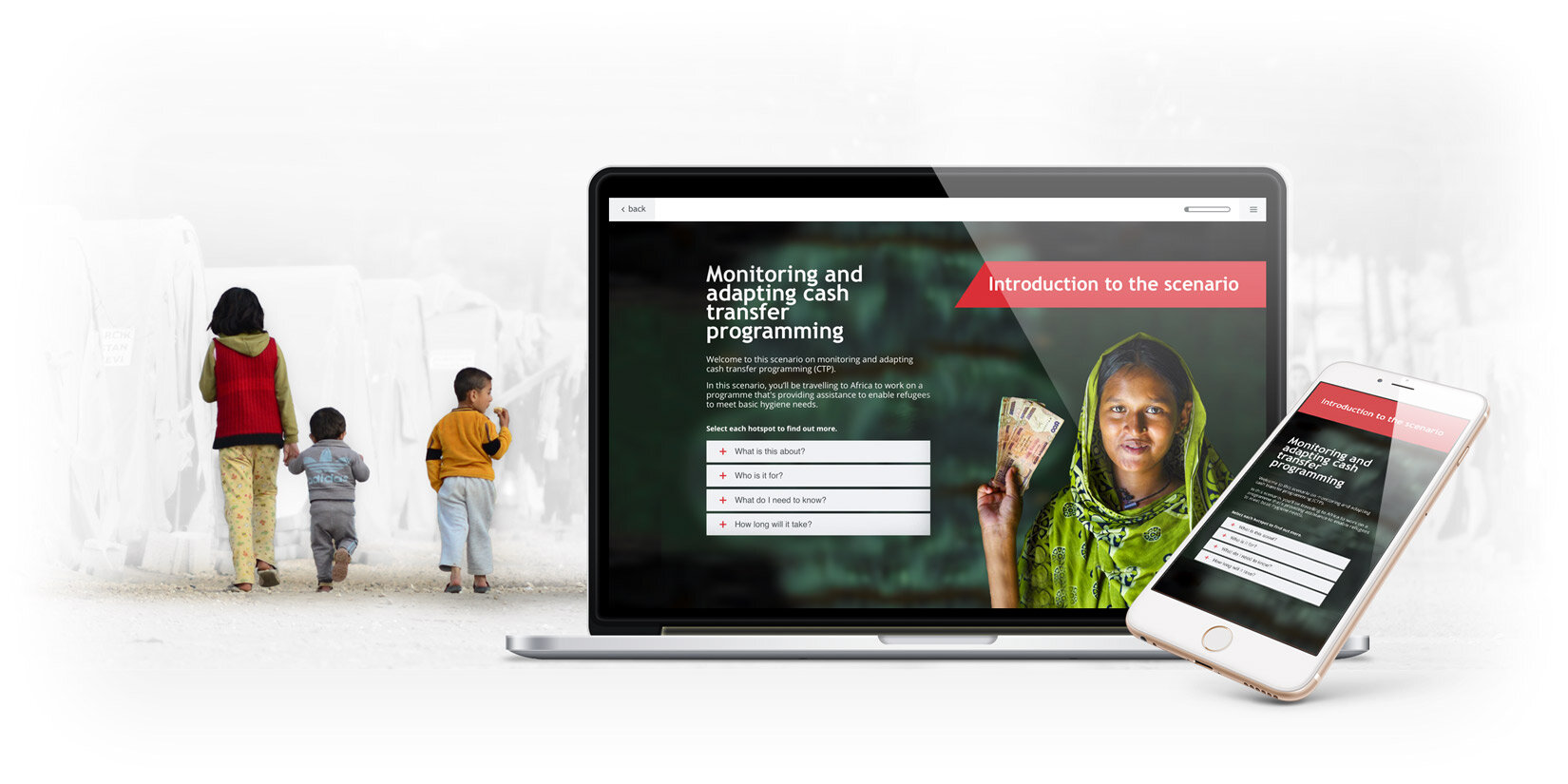
CASE STUDY
Cash Learning Partnership (CaLP)
Equipping workers around the world to take life-saving action
Cash Learning Partnership (CaLP) helps humanitarian organisations respond to crises with life-saving cash transfer and voucher programmes. They wanted to equip workers to implement schemes in a wide range of situations and environments. Using real world situations to introduce the core principles and concepts, we provided gamified learning that was engaging without being patronising. It involves learners emotionally and ensures meaningful transfer of knowledge, so it can be applied in practice.
The brief
CaLP wanted to convey a huge amount of detailed information to their learners. They needed a course that would take practitioners from basic concepts, through to applying these to devise and run programmes in complex situations. Given how and where the course would be accessed, it was essential the content would work on mobile devices and over poor internet connections. But it still needed to be compelling enough to engage busy and often under-resourced workers.
Key points
Technical content
Engaging learners
Gamified learning
HTML elearning
Our approach
We proposed introducing core principles and concepts via life-like situations. With the CaLP team’s input, we devised interactive case-studies that would involve learners in scenarios they could identify with. As well as being highly interactive and keeping learners engaged, scenarios provided a way to demonstrate how the theoretical knowledge could be applied in different situations, geographies and cultures.

Having established the precise learning needs and objectives, our instructional designers worked with CaLP’s subject experts to organise the content.
By reflecting the raw content back to the experts, from a novice viewpoint, we were able to develop a thorough and cohesive sequence of learning points.
We made sure each scenario told an absorbing story that allowed for character development, while avoiding unnecessary detail that might distract learners or reduce impact. Branching options in the stories allowed workers to take different journeys, based on their role.
Finally we build the scenarios in Adapt – using a combination of custom illustrations, animated graphics and audio (using ethnically/regionally appropriate characters and voices).
Because the course is in HTML5 it works responsively on mobile devices. We also ensured all media were carefully optimised to allow the course to run over low bandwidths. This included optimising the files size of all images, only utilizing voiceover to add realism to the characters in each scenario and externally hosting all videos.
Results
The resulting course allows a vast amount of information to be conveyed without being text-heavy or dry.
The realism of the scenarios provided gamified learning that was engaging without being patronising, or requiring the busy learner to invest more time that was necessary.
Using characters allowed us to involve learners emotionally as well as intellectually. By requiring learners to actively solve problems the focus stayed on applying the technical knowledge, which helped to motivate learners and ensure they remembered and used the new knowledge.
The course can be found on Kaya Connect, the global learning platform of the Humanitarian Leadership Academy.



